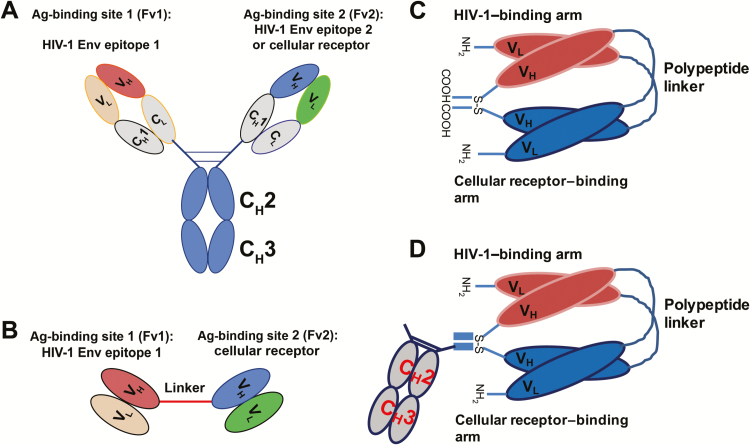Figure 2.
Anti–human immunodeficiency virus (HIV) type 1 envelope (Env) antibody-derived molecules. A, Bispecific antibodies combine 2 antigen (Ag)–binding site variable fragments (Fvs) into a single immunoglobulin. The 2 Fvs (Fv1 and Fv2) can recognize 2 different antigenic regions of the HIV-1 Env [104*], or the HIV-1 Env and cellular receptors involved in virus entry [105*, 106*] or in cytotoxic functions [107*]. B, Bispecific T-cell engagers (BiTEs), which are generated by using a single polypeptide linker to join 2 single-chain Fvs (scFvs) with different antigen specificities. The first-generation HIV BiTE was designed to bind the HIV-1 envelope CD4-binding site and recruit cytotoxic T cells by engaging CD3 [47]. C, D, Dual-affinity retargeting (DART) molecules. The variable domains of the 2 scFvs are not only linked by a polypeptide linker to create a “diabody”-type structure but also stabilized into a disulfide-linked heterodimer with different antigen specificity. One arm can bind the HIV-1 envelope, and the other can bind cytotoxic effector cells [45]. DART molecules can also be designed to include the antibody Fc region to improve the half-life of the molecules [46].

